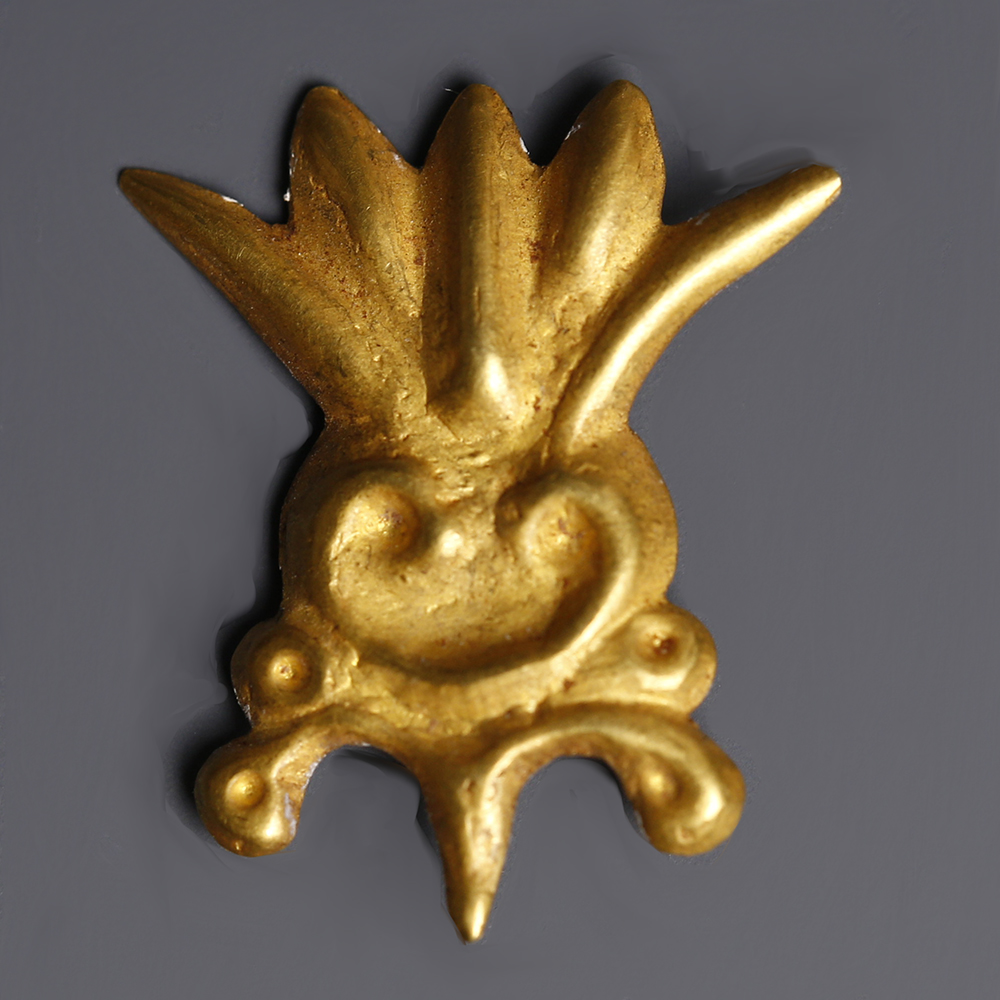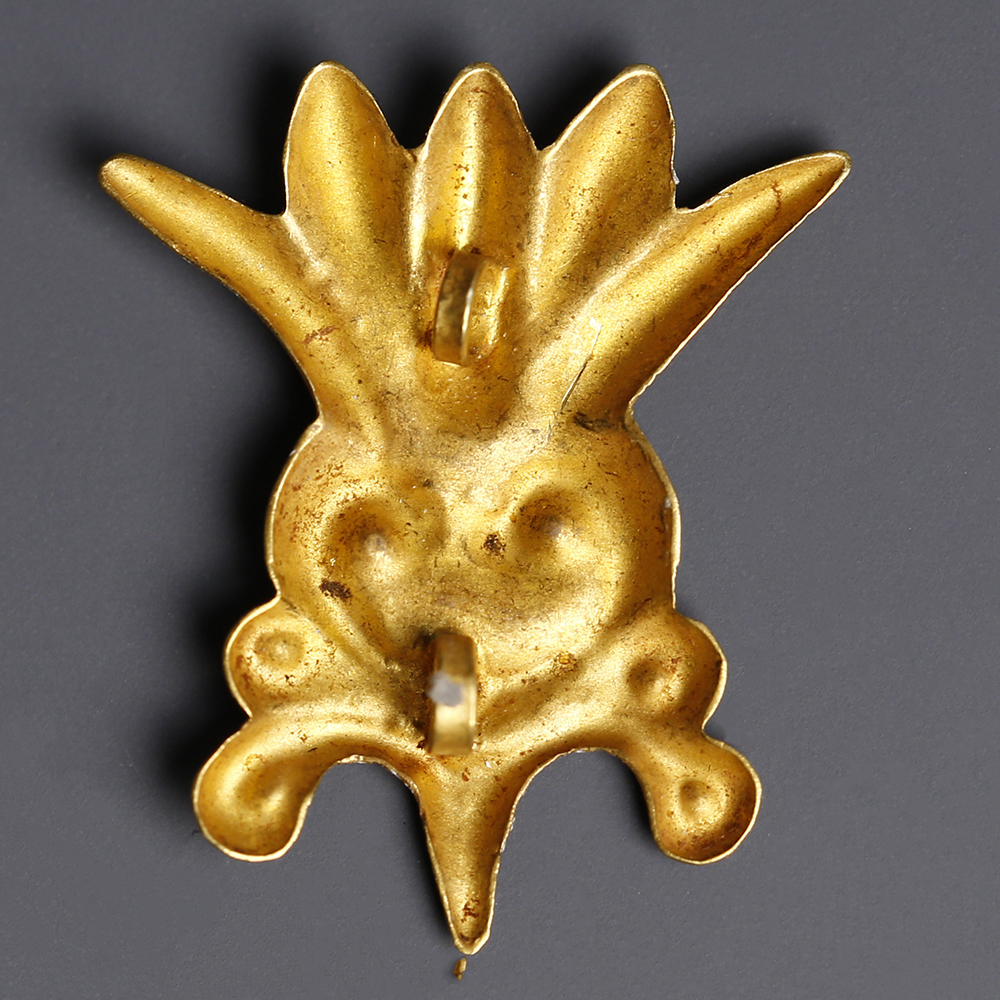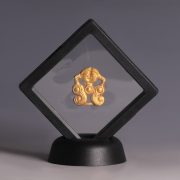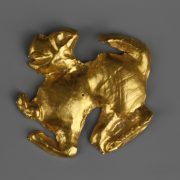Discovered in 1947, this Lotus flower appliqué was part of a treasure hoard uncovered from the Ziwiye site in western Iran. Comprising of many gold, silver and ivory objects, the Ziwiye hoard is said to be free from any foreign influence. The lotus flower in many Near eastern cultures was a token of purity based on the concept of enlightenment, it represented self-regeneration and the cycle of rebirth.
Scythia was an area in central Eurasia, which bordered the Black Sea and largely consisted of nomadic tribes. Scythian art was primarily decorative in its nature, and the Scythians were famed for their highly ornate and carefully crafted jewellery. This gold mount would have been affixed to garments as decoration, usually as part of a pattern, with multiple gold mounts on a single item of clothing. So integral was gold to Scythian fashions that even horses were richly decorated in gold ornamentation.
To discover more about Scythian culture, please visit our relevant blog post: Scythian Gold.



